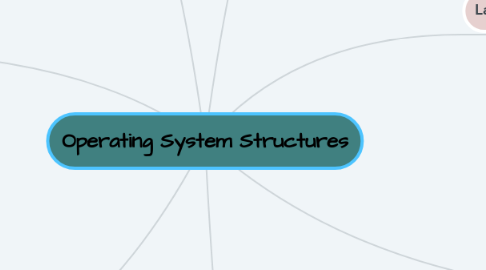Operating System Structures
af Lim Yan


1. Operating System Services
1.1. User interface
1.2. Program execution
1.3. I/O operation
1.4. File-system manipulation
1.5. Communication
1.6. Error detection
2. Additional Operating System Functions
2.1. Resource allocation
2.2. Accounting
2.3. Protection and security
3. System Call
3.1. Interface between a running program and the operating system.
3.2. Types
3.2.1. Process control
3.2.2. File management
3.2.3. Device management
3.2.4. Information maintanance
3.2.5. Communication
3.2.6. Protection
4. Layered Approach
4.1. The operating system can then retain much greater control over the computer and over the application that make use of that computer.
4.2. Advantage
4.2.1. Simplicity of construction and debugging
4.3. Disadvantage
4.3.1. Less efficienfy
5. Microkernel
5.1. Provide a communication facility between the client program and the various services that are also running in user space.
5.2. Benefits
5.2.1. Extensibility
5.2.2. Flexibility
5.2.3. Realiability
5.2.4. Portability
6. Operating System Design
6.1. User goals
6.1.1. operating system should be convenient use, easy to learn, reliable, safe, and fast.
6.2. System goals
6.2.1. operating system should be easy to design, implement, and maintain, as well as flexible, reliable, error-free, and efficient.
7. Communication Model
7.1. Message passing
7.1.1. Communication takes place by means of message exchanged between the cooperating processes.
7.2. Shared memory
7.2.1. A region of memory that is shared by cooperating processes is established.

